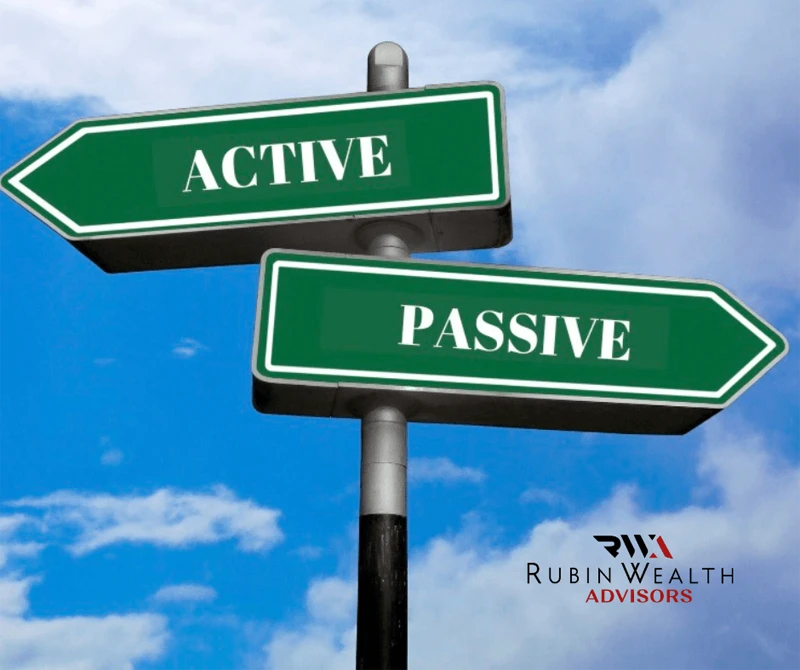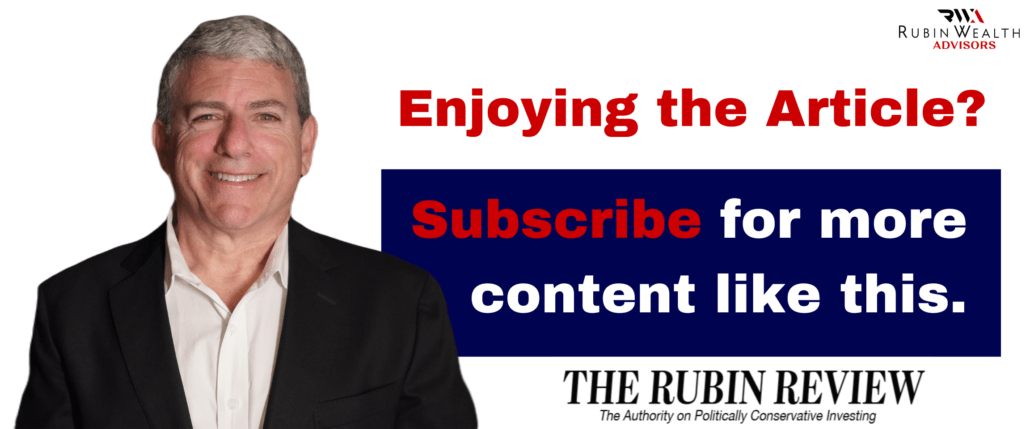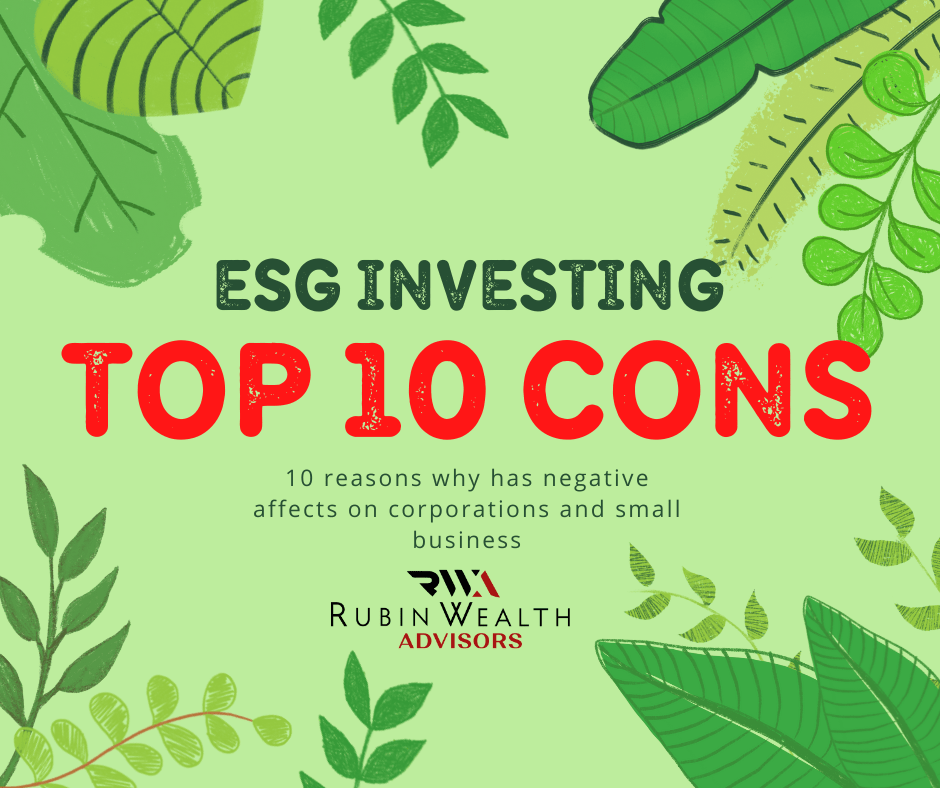Active vs Passive Investing
/in Uncategorized /by Bob Rubin
There are two ways to put your money to work in the markets: passive and active. Both use standard benchmarks like the S&P 500 to measure their success, but dynamic investing tries to beat the benchmark while passive investing attempts to match it.
What does “active investing” mean?
Active investing is a strategy that involves buying and selling stocks often, usually intending to get better returns than the average index. It’s what you think of when you envision traders on Wall Street, though nowadays, you can do it from the comfort of your smartphone using apps like Robinhood.
Bob Rubin, an investment advisor and senior partner at Rubin Wealth Advisors, a financial planning firm in Boca Raton, Fl, says that investing usually requires a high level of market analysis and expertise to determine the best time to buy or sell investments.
You can invest actively on your own or hire professionals to do it for you through actively managed mutual funds and traded funds (ETFs). These provide you with a ready-made portfolio of hundreds of investments.
Active fund managers look at a lot of information about each investment in their portfolios. This includes both quantitative and qualitative information about security and the market and economic trends. Managers use this information to buy and sell assets to take advantage of short-term price changes and keep the fund’s asset allocation on track.
Without that constant attention, it’s easy for even the most meticulously designed, actively managed portfolio to fall prey to volatile market fluctuations and rack up short-term losses that may impact long-term goals.
Most investors should avoid active investing, especially regarding their long-term retirement savings.

Pros of investing actively
Flexibility in volatile markets. “In down markets, the active investor can move to a defensive position or hold, like cash or government bonds, to avoid huge losses,” says Brian Stivers, an investment adviser and founder of Stivers Financial Services in Knoxville, Tennessee. In the same way, investors can change their portfolios to hold more stocks in growing markets. By reacting to real-time market conditions, they can beat the performance of market benchmarks like the S & P 500, at least in the short term.
Trading options have grown. Active investors can use trading strategies like hedging with options or shorting the stock to make windfalls that increase their chances of beating market indexes. But these can also significantly increase the costs and risks of active investing, so they are best left to professionals and investors with a lot of experience.
Tax management. Active investing allows an intelligent financial advisor or portfolio manager to make trades that offset gains for tax purposes. This is called “harvesting tax losses.” Even though you can use tax-loss harvesting with passive investing, active investment strategies may offer more opportunities and make it easier to avoid the wash-sale rule because they involve more trading.
If you’re more interested in achieving financial gains instead of perpetuating underperforming woke strategies, call Rubin Wealth Advisors to speak to a professional with the same moral values as you.
Active investing has some drawbacks.
There is an increase in costs. Stocks and ETFs are no longer subject to trading fees at most brokerage firms. There may be fees associated with more complex trading strategies that use derivatives. If you invest in actively managed funds, you’ll pay high fees. Actively managed funds had an average expense ratio of 0.71 percent as of 2020.
Added Risk. If correct, active investors can make a significant amount of money but if you make the wrong call, then the opposite is also true. Using borrowed money, or margin, to purchase an investment can cause huge gains and losses if it moves in the opposite direction.
Trend exposure. It’s easy to jump on the bandwagon and follow active investing trends, whether meme stocks or exercise fads related to pandemics. Think about the investor who decided to join the movement of working out at home and bought Peloton (PTON) on January 4, 2021, for $145. Since the pandemic is almost over, that stock is worth less than $10 as of July 2022. Investing based on trends can take time to tell if you’re at the end of the movement or if there’s still room for growth.
How does passive investing work?
The goal of passive investing is to buy assets and keep them for a long time. It’s best described as a hands-off approach: you choose security and then hold on through ups and downs with a long-term goal like retirement in mind.
Passive strategies usually involve buying shares of index funds or ETFs that try to match the performance of major market indexes like the S&P 500 or Nasdaq Composite. The active approach tends to focus on individual stocks. You can buy shares of these funds through any brokerage account or a Robo-advisor.
Passive investing doesn’t need to be looked at every day because it’s a “set it and forget it” method that only tries to match the performance of the market. This means fewer transactions and much lower fees, especially regarding money. Because of this, financial advisors often recommend it for retirement savings and other investment goals.
Pros of Passive Investing
Lower cost. Passive investing can lower costs for individual investors because there are fewer trades. Also, passively managed funds have lower expense ratios than most actively managed funds because they don’t have to do as much research or work. In 2020, the average cost of passive mutual funds was 0.06%, while the average price of passive ETFs was 0.18%.
You have less risk. Because passive strategies focus on funds, you usually put your money into hundreds or thousands of stocks and bonds. This makes it easy to spread your money around and lowers the chance that one lousy investment will ruin your whole portfolio. If you do your own active investing and don’t diversify enough, one terrible stock could wipe out many of your gains.
Transparency. When you invest passively, you get what you see. The index your fund follows is often part of its name, and it will never invest in anything else. On the other hand, actively managed funds sometimes provide a different level of transparency. A lot is up to the manager’s discretion, and some techniques may even be kept from the public to maintain a competitive edge.
Higher average returns. When investing for the long term, passive funds of all kinds almost always give higher returns. Over 20 years, about 90% of index funds tracking companies of all sizes outperformed their active counterparts. According to the latest S&P Indices Versus Active (SPIVA) report from S&P Dow Jones Indices, even over three years, more than half of them did.
What’s wrong with passive investing?
It doesn’t stand out. If you want the excitement of seeing a single stock’s price go up quickly and skyrocket, passive investing can’t compare.
In lousy bear markets, there is no way to get out. Stivers warns that passive investing has no way out during big market drops because it is made for the long term. Even though the market has always bounced back after a correction, there’s no guarantee it will do so quickly this time. This is one reason why it’s essential to change your asset allocation from time to time over a long period. So, as you get closer to the end of your investing time frame and have less time to recover from a market drop, you can make your portfolio more conservative.
Should You Choose an Active Fund or Style of Investing?
Since passive investing offers higher returns and lower costs over the long term, you might wonder if active investing has any place in the average investor’s portfolio. The answer may be yes for some types of investors.
Keeping your money safe
Stivers says that active investing strategies could help investors who care more about keeping their money than making more of it. For example, someone close to retirement who doesn’t have time to recover from significant losses or who wants to build a steady income instead of seeing steady long-term capital gains might do well with an active strategy.
Strategies that work together
Bob says that active and passive investments don’t have to be opposites and that a mix of the two could work well for many investors.
During a bull market, investors with both active and passive holdings can use their active portfolios to protect against downturns in their passive portfolios. A combination approach can also give investors peace of mind, knowing that their passive, long-term strategy (like retirement funds) is on autopilot. In contrast, their active, short-term approach (like a taxable brokerage account) lets them explore trends without putting their long-term goals at risk.
Bob says that active and passive investments don’t have to be opposites and that a mix of the two could work well for many investors.
During a bull market, investors with both active and passive holdings can use their active portfolios to protect against downturns in their passive portfolios. A combination approach can also give investors peace of mind, knowing that their passive, long-term strategy (like retirement funds) is on autopilot. In contrast, their active, short-term approach (like a taxable brokerage account) lets them explore trends without putting their long-term goals at risk.
If you’re more interested in achieving financial gains instead of perpetuating underperforming woke strategies, call Rubin Wealth Advisors to speak to a professional with the same moral values as you.

Are you concerned about inflation, ESG compliances, and the 2022 crypto crash?
Your investment portfolio can be affected by any or all of these factors.
Schedule an appointment with Bob Rubin, your dedicated, conservative financial advisor, for a free portfolio analysis today.
Get started by clicking the button below.
Related Articles
No BS… Just straight forward advice
Contact Bob, the Nation’s Predominant
Politically Conservative Financial Advisor Today!






